Potřebujeme váš souhlas k využití jednotlivých dat, aby se vám mimo jiné mohly ukazovat informace týkající se vašich zájmů. Souhlas udělíte kliknutím na tlačítko „OK“.
ASTM D6032-08
Standard Test Method for Determining Rock Quality Designation (RQD) of Rock Core
Automaticky přeložený název:
Standardní zkušební metoda pro stanovení Skalní kvalita Značka (RQD) Rock jádra
NORMA vydána dne 1.7.2008
Informace o normě:
Označení normy: ASTM D6032-08
Poznámka: NEPLATNÁ
Datum vydání normy: 1.7.2008
Kód zboží: NS-33495
Počet stran: 5
Přibližná hmotnost: 15 g (0.03 liber)
Země: Americká technická norma
Kategorie: Technické normy ASTM
Kategorie - podobné normy:
Ostatní normy týkající se jakosti půdy
Zařízení pro vrtání a rubání
Anotace textu normy ASTM D6032-08 :
Keywords:
classification, index, logging, quality, rock, rock core, Classification, Drilling (in soil/rock), Logging, Rock materials/properties/analysis, RQD (rock quality designation), ICS Number Code 13.080.99 (Other standards related to soil quality), 73.100.30 (Equipment for drilling and mine excavation)
Doplňující informace
| Significance and Use | ||||||||||||
|
The RQD was first introduced in the mid 1960s to provide a simple and inexpensive general indication of rock mass quality to predict tunnelling conditions and support requirements. The recording of RQD has since become virtually standard practice in drill core logging for a wide variety of geotechnical investigations. The RQD values provide a basis for making preliminary design decisions involving estimation of required depths of excavation for foundations of structures. The RQD values also can serve to identify potential problems related to bearing capacity, settlement, erosion, or sliding in rock foundations. The RQD can provide an indication of rock quality in quarries for concrete aggregate, rockfill, or large riprap. The RQD has been widely used as a warning indicator of low-quality rock zones that may need greater scrutiny or require additional borings or other investigational work. The RQD is a basic component of many rock mass classification systems for engineering purposes. Used alone, RQD is not sufficient to provide an adequate description of rock mass quality. The RQD does not account for joint orientation, tightness, continuity, and gouge material. The RQD must be used in combination with other geological and geotechnical input. The RQD is sensitive to the orientation of joint sets with respect to the orientation of the core. That is, a joint set parallel to the core axis will not intersect the core, unless the drill hole happens to run along the joint. A joint set perpendicular to the core axis will intersect the core axis at intervals equal to the joint spacing. For intermediate orientations, the spacing of joint intersections with the core will be a cosine function of angle between joints and the core axis. Core sizes from BQ to PQ with core diameters of 36.5 mm (1.44 in.) and 85 mm (3.35 in.), respectively, are normally acceptable for measuring RQD as long as proper drilling techniques are used that do not cause excess core breakage or poor recovery, or both. The NX-size (54.7 mm [2.16 in.]) and NQ-size (47.5 mm [1.87 in.]) are the optimal core sizes for measuring RQD. The RQD is also useful for large core diameters provided the core diameter is clearly stated. The RQD calculated for core smaller than BQ may not be representative of the true quality of the rock mass. Note 1—The quality of the result produced by this standard is dependent on the competence of the personnel performing it, and the suitability of the equipment and facilities used. Agencies that meet the criteria of Practice D 3740 are generally considered capable of competent and objective testing/sampling/inspection/etc. Users of this standard are cautioned that compliance with Practice D 3740 does not in itself assure reliable results. Reliable results depend on many factors; Practice D 3740 provides a means of evaluating some of those factors. |
||||||||||||
| 1. Scope | ||||||||||||
|
1.1 This test method covers the determination of the rock quality designation (RQD) as a standard parameter in drill core logging. 1.2 All observed and calculated values shall conform to the guidelines for significant digits and rounding established in Practice D 6026. 1.2.1 The method used to specify how data are collected, calculated, or recorded in this standard is not directly related to the accuracy to which the data can be applied in design or other uses, or both. How one applies the results obtained using this standard is beyond its scope. 1.3 The values stated in SI units are to be regarded as the standard. The values given in parentheses are mathematical conversions to inch-pound units that are provided for information only and are not considered standard. 1.4 This standard does not purport to address all of the safety concerns, if any, associated with its use. It is the responsibility of the user of this standard to establish appropriate safety and health practices and determine the applicability of regulatory limitations prior to use. |
||||||||||||
| 2. Referenced Documents | ||||||||||||
|
Podobné normy:
Historická
15.1.2013
Historická
1.5.2014
Historická
1.9.2012
Historická
1.5.2011
Historická
1.11.2011
Historická
1.11.2012
Doporučujeme:
Aktualizace zákonů
Chcete mít jistotu o platnosti užívaných předpisů?
Nabízíme Vám řešení, abyste mohli používat stále platné (aktuální) legislativní předpisy.
Chcete vědět více informací? Podívejte se na tuto stránku.


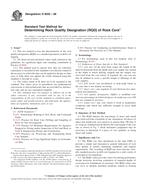
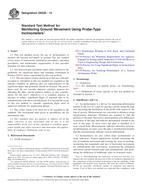 ASTM D6230-13
ASTM D6230-13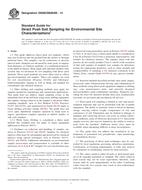 ASTM D6282/D6282M-14..
ASTM D6282/D6282M-14.. ASTM D6286-12
ASTM D6286-12 ASTM D7046-11
ASTM D7046-11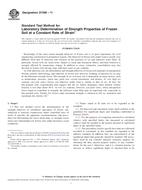 ASTM D7300-11
ASTM D7300-11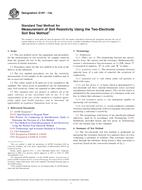 ASTM G187-12a
ASTM G187-12a
 Cookies
Cookies
